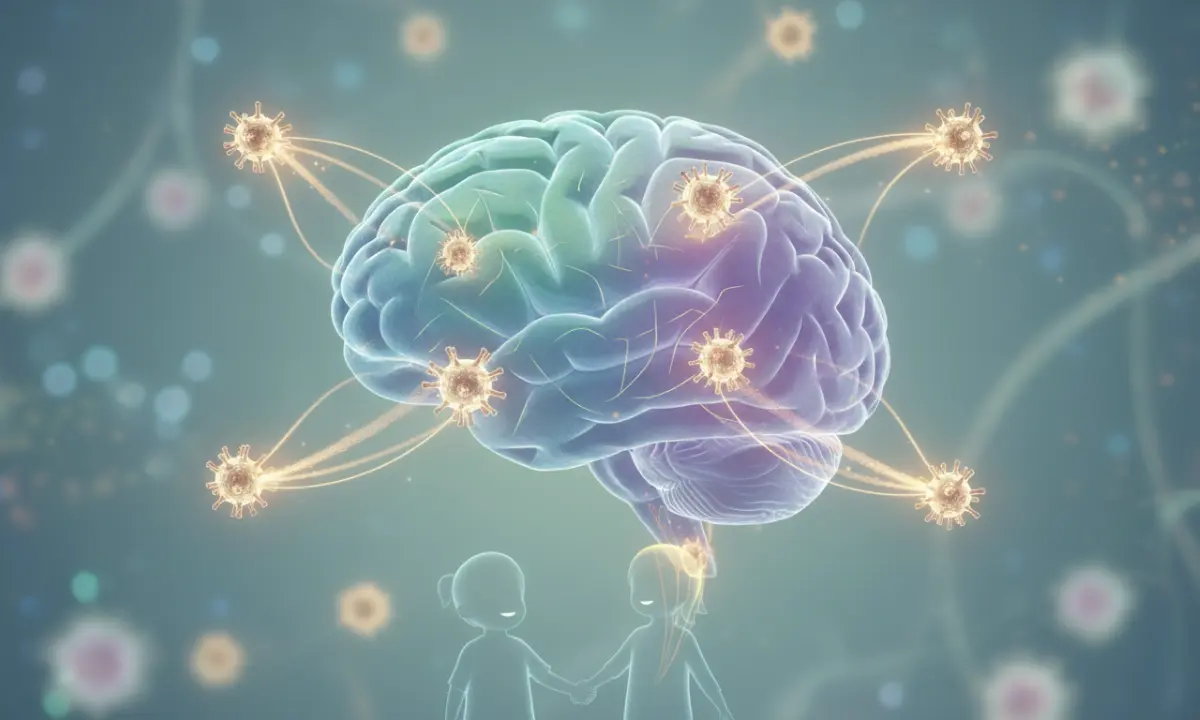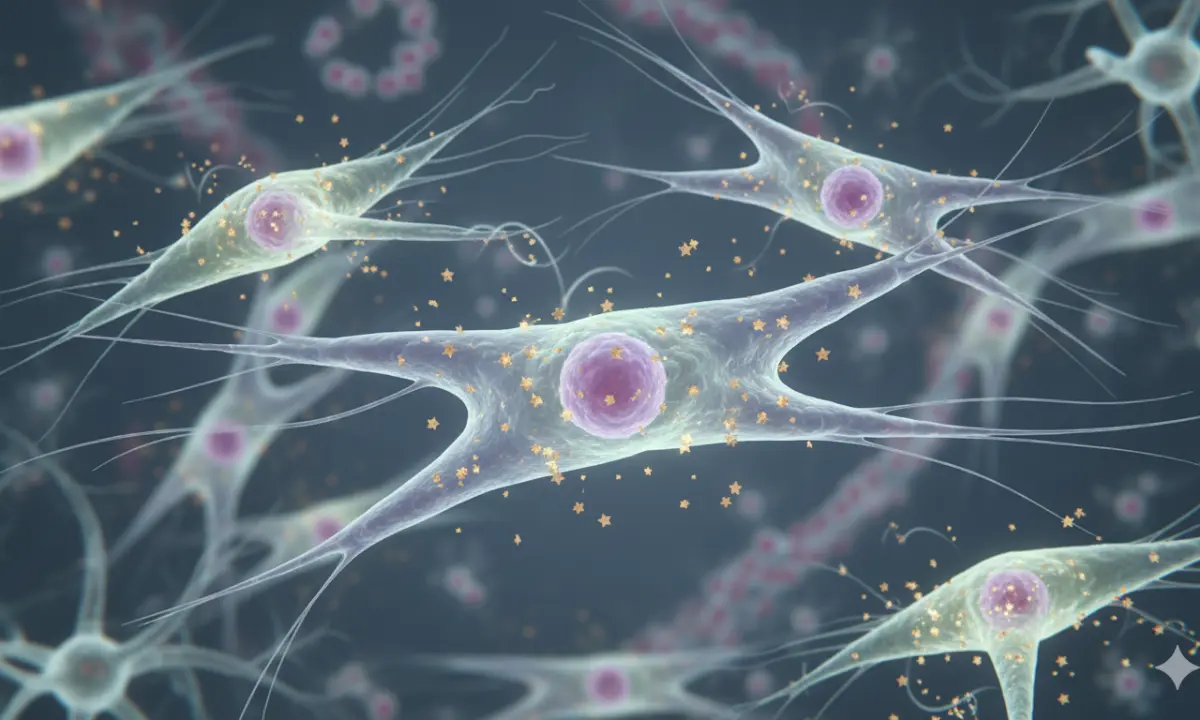
How Mesenchymal Stem Cells (MSCs) Can Improve Autism Symptoms
Autism Spectrum Disorder (ASD) is a complex neurodevelopmental condition. While behavioral interventions are key, emerging research in regenerative medicine is opening a promising new door: mesenchymal stem cells (MSCs).
This therapy is moving from the purely theoretical to the clinical, and many parents are asking: How can cells possibly help with a condition like autism?
The answer lies not in “replacing” the brain, but in healing the body. Here’s a breakdown of the science behind mesenchymal stem cells, autism therapy, and how it works.
Table of Contents
What Are Mesenchymal Stem Cells?
First, let’s clarify what MSCs are. Mesenchymal stem cells are a specific type of adult stem cell. They are “multipotent,” meaning they have the potential to develop into a few different types of cells, like bone, cartilage, and fat.
However, their primary power, especially for neurodevelopmental conditions, isn’t in becoming new brain cells. Instead, their job is to act as the body’s natural “conductors” for healing and repair. They are master regulators.
They can be sourced from several places, including bone marrow and adipose (fat) tissue.
Learn how stem cell therapy differs from bone marrow transplant in safety, source, and treatment outcomes.
However, one of the richest and most potent sources is umbilical cord tissue.

How Stem Cells Work for Autism: A Three-Part Process
The core of how stem cells work for autism is not about regeneration in the way most people think. The leading theories suggest that many of autism’s most challenging symptoms are linked to two underlying issues: neuroinflammation (chronic inflammation in the brain) and immune dysregulation (an imbalanced or overactive immune system).
MSCs are uniquely equipped to tackle both of these problems.
1. They Are Potent Anti-Inflammatories
MSCs are like mobile anti-inflammatory factories. When they are introduced into the body, they are naturally drawn to sites of inflammation. Once there, they release powerful compounds (cytokines) that tell the body’s inflammatory response to “calm down.” By reducing chronic inflammation in the brain and gut, they can alleviate a major source of irritation that may contribute to sensory overload, agitation, and repetitive behaviors.
2. They Are Master Immune Modulators
Many individuals with ASD have an immune system that is “out of balance.” It may over-react to certain triggers or fail to regulate itself properly. MSCs are “immunomodulatory,” meaning they can help restore this balance. For a deeper dive, read our article on what immunomodulation means and how it helps balance the immune system.
They essentially help “reboot” the immune system, toning down its overactive parts and boosting its regulatory parts. This can lead to systemic improvements in overall health and well-being.3. They Support Neuroprotection and Repair (The “Paracrine Effect”)
This is the most exciting part. MSCs don’t just stop inflammation; they also release a cocktail of powerful proteins and growth factors (this is called the “paracrine effect”). These healing proteins are further explained in our guide on growth factor stem cell therapy.
These growth factors, such as Brain-Derived Neurotrophic Factor (BDNF), act like fertilizer for brain cells. Some of these growth processes also rely on structural proteins like collagen discover what collagen is and why it’s essential for tissue repair.
They help:
This process doesn’t “cure” the underlying genetic components of autism, but it can create a healthier, better-functioning neurological environment, which may lead to improved language, social skills, and cognitive function.
The Source Matters: Why High-Quality Umbilical Cord Stem Cells?
When considering stem cell therapy, the source and quality of the cells are paramount. At the Institute for Regenerative Medicine (IRM), we exclusively use MSCs derived from umbilical cord stem cells.
Explore more about umbilical cord tissue stem cell therapy and why it’s considered one of the most advanced and ethical sources for regenerative treatment.
There are several critical advantages to this source:
Our partner labs rigorously screen these donated cords to ensure they are free of disease. They are then processed and cultured in a state-of-the-art facility to ensure every patient receives a sterile, viable, and highly potent therapeutic product.
Understanding the Dosage and Administration
The process itself is straightforward and minimally invasive. The cells are administered slowly through a simple intravenous (IV) infusion, much like getting a standard vitamin drip. Another complementary IV treatment that supports neurological health is NAD IV therapy, which helps boost cellular energy and cognitive function.
The dosage is a critical part of the protocol and is carefully calculated based on the patient’s specific body weight. At IRM, the standard therapeutic dosage ranges from 1 million to 5 million mesenchymal stem cells per kilogram of body weight. This precise calculation ensures the patient receives an optimal, safe, and effective dose to maximize the potential for anti-inflammatory and immunomodulatory effects.
You can see how this protocol is applied within our Autism stem cell treatment plan at IRM, where therapy is combined with behavior, speech, and nutrition programs for holistic progress.
A New Horizon of Hope
Mesenchymal stem cell therapy is one of the most promising frontiers in autism treatment. By addressing the physiological roots of inflammation and immune dysregulation, it offers a biological approach that can create a foundation for other therapies to be more effective.
While not a cure, MSC therapy represents a powerful new tool to help improve symptoms, enhance quality of life, and support the potential of individuals with autism.










